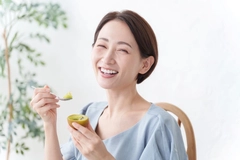Antioxidants found in caramel study “almost equivalent to a glass of orange juice”
03 May 2021 --- A Nigay-supported study has linked antioxidant properties to the color intensity of caramel. Using three different research methods, the study found the greater the degree of caramelization, the greater the antioxidant activities could be.
Based on the study’s results, the antioxidant capacity from the daily ingestion of caramel colors is “almost equivalent to a glass of orange juice” – 140 mg gallic acid equivalent to 160 mg for fruit juice.
“Caramels are prepared from sugars but they are different from sugars,” Cédric Moretton, physico-chemical laboratory manager at Nigay, tells NutritionInsight. “During the caramelization process, thousands of different molecules are created, responsible for the flavor and the color of caramels. The more the caramel is cooked, the less residual sugars.”
The study authors further suggest caramels could represent a significant source of antioxidants that may prevent the effects of free radical-induced physiological stages or diseases.
“Future applications would particularly be of great interest in aging prevention, clinical or sports nutrition,” the study authors write.
Using three different methods, the Nigay-supported study found antioxidant properties in caramels.This study opens up “a promising field of research” on the antioxidant potential of heated-formed compounds present in caramels, while bringing new elements that highlight the potential beneficial health effects of caramels.
Triple confirmation?
In 2016, Nigay found a study showing how compounds formed during the sugar heating. “We found that, as with coffee, a product relatively close to caramel, molecules responsible for caramel color could have beneficial effects,” says Moretton.
Used simultaneously to evaluate the antioxidant activity of marketed aromatic caramels and caramel colors, three different methods showed “promising results,” note the researchers.
First, the research team conducted a chemical analysis using a blue molecule called 2′-azinobis3-ethylbenzothiazoline-6-sulfonic acid (ABTS), which detects antioxidants by discoloring in their presence.
Second, the study used a Kit Radicaux Libres (KRL) test to discover caramels’ antioxidants can protect the lifespan of blood cells when they are attacked by strong oxidants.
Finally, the study authors assessed the impact of caramels on the lifespan of Caenorhabditis elegans roundworms in the presence of strong oxidants. In an in vivo analysis, up to 40 percent of the live worms survived after 18 hours of treatment in the presence of caramels in contrast to no live worms surviving after 12 hours of treatment without the caramel treatment.
When asked how the worm analysis is relevant to humans, Moretton explains that antioxidant activity is a physicochemical activity. “There is a direct reaction between an oxidant and an antioxidant so it is independent of animal species.”
These results combined “strongly support” the hypothesis that the process of heating sugars leads to compounds with beneficial antioxidant properties.
The caramel king
These study results arrive as sea salt caramel continues its path as a popular F&B ingredient, ranked fifth in Innova Market Insights flavor rankings in 2020. Taste still trumps texture in ice cream trends alone, according to the market researcher.
Meanwhile, global consumers are both craving better-for-you and comfort foods – ideally a combination of both – throughout the testing times of the COVID-19 pandemic.
Antioxidants remain on global consumers health radar. Last November, researchers from Kumamoto University in Japan developed a new system of measuring food’s antioxidant capacity. Applications for the technology are quality control in the production, manufacturing and sale of food products, such as meat, fish, vegetable and fruits.
The molecules involved in providing caramels with antioxidants “remain to be explored.”Production details
Caramel is produced by controlled heating of sugars, such as sucrose or glucose syrup, with or without the presence of caramelization promoters to provide a wide range of ingredients – aromatic caramels, burnt sugars or specialties – or caramel colors as additives.
According to Nigay, caramelization is close to the Maillard reaction and begins with a dehydration of the sugars then a polymerization of the molecules formed.
These multiple reactions create a complex mixture of compounds ranging from small molecules responsible for the typical taste of caramel to large molecules responsible for the brown color of caramel.
“This publication describes the first study demonstrating the antioxidant activity of caramel. It is still too early to declare that caramels have a health positioning and multiple additional studies will be necessary to achieve this,” Moretton concludes.
By Anni Schleicher













